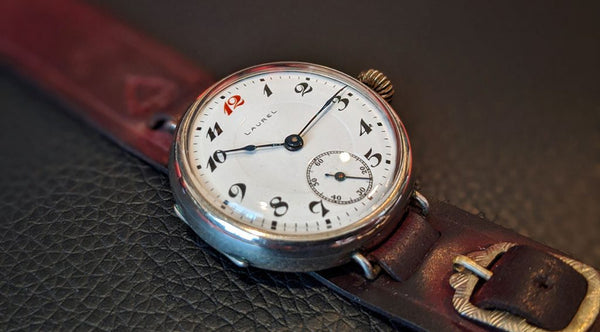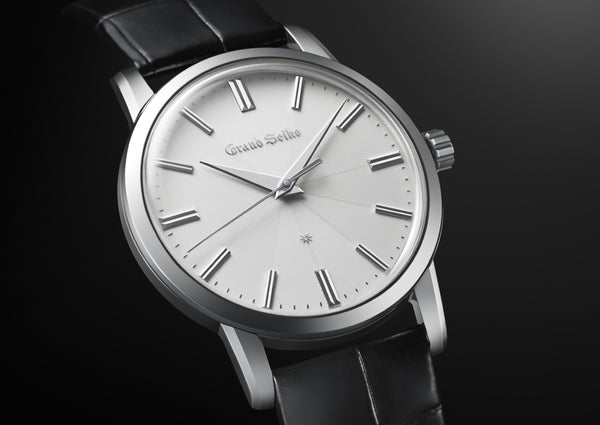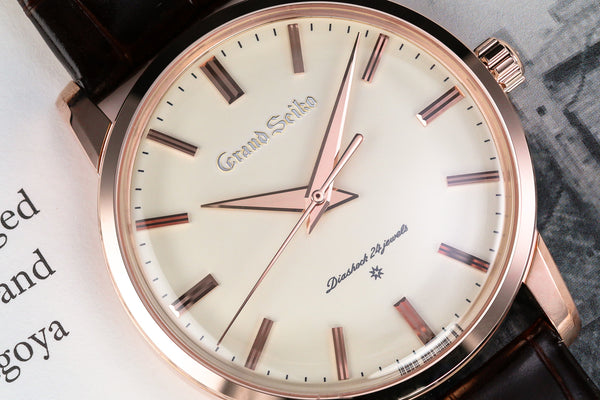The People Behind Seiko: Kintaro Hattori
Seiko was founded in 1881 by Kintaro Hattori. At the young age of 21, Hattori formed a jewelry and watch shop called K. Hattori in Tokyo, Japan. This would be the start of Seiko, one of the best known watch brands in the world.
Within 140 years, Seiko evolved from a straightforward clock company to an innovator in watch technology. In 1892 Hattori bought a factory in Tokyo and formed Seikosha, which is the company that would go on to produce what we now know as Seiko watches.
We love Seiko parts and Seiko mods - but we wouldn’t exist with the amazing ideas of Kintaro Hattori. Let’s take a look at how Kintaro Hattori created the Japanese watch giant.
Kintaro Hattori
Kintaro Hattori was born in Uneme-Cho Kyōbashi, Tokyo in 1860, and came from a well-established family of merchants.
While well known now, Hattori started off young in the world of business.

At the age of thirteen, he was initiated in commercial and technical training and was engaged the subsequent year by Kobayashi Denjiro, one of the most prominent watch and clock traders in Japan in his time. This is when he started his first internship at the Kameda Clock Shop.
Not long after, he founded his primary watchmaking factory in Japan named "Seikosha", in 1892. Hattori also founded the watch and jewelry shop, K. Hattori, within the Ginza area of Tokyo. This company is currently named Seiko Holdings Corporation and globally called Seiko.

Following the success of his first Japanese manufactured timepieces, he traveled to Europe to examine and buy tools to stay up with western technology and productivity. Hattori returned to Japan with new watchmaking equipment, and a multitude of other new product lines was born as a consequence.
At the age of 35, he launched a line of pocket watches called the "Timekeeper" and just some years later released his first line of alarm clocks, in 1899.
By 1905, K. Hattori had expanded his dealings everywhere in Japan additionally as Shanghai and the urban center, and had become the biggest watch and clock dealer in Japan. In 1913, aged 53, Kintaro Hattori manufactured and introduced the first Japanese wristwatch: the "Laurel."

A bit bulky for today's standard, but a marvel nonetheless. Source: The Seiko Guy
After the great earthquake of September of 1923, Seikosha had been rebuilt, and wristwatch production resumed under a new brand name: Seiko.
The K. Hattori & Co. store in downtown Ginza was also reconstructed in 1932 along with its emblematic clock tower; it is still a landmark heritage building in Ginza to this day. Kintaro Hattori died in 1934 at the age of 73.
Watches Made in Hattori’s Honor
The Grand Seiko Masterpiece Collection Kintaro Hattori 160th Anniversary edition SBGZ005 (The Japanese love long-winded names for some reason) may be a dream come true for several Grand Seiko aficionados with a penchant for smaller, slimmer models.

A mesmerizing dial pattern. Source: A Blog to Watch
The characteristic play of sunshine and shadow of each Grand Seiko watch is achieved with the geometric background and also the bright shine emanating from the indices and hands.

We venture to guess that Kintaro would have a hard time choosing a favorite between the two gorgeous watches. Source: GS9 Club
The Grand Seiko Masterpiece Collection edition SBGW260 is a recreation of a model from 1960 that kickstarted the celebrations of the 140th anniversary of the company’s foundation in January of 2021.
The 18k rose gold case of this SBGW260 measures 38mm and includes a slim profile of 10.9mm. To mark the anniversary, the indices also are made of rose gold and just like the hands, faceted, beveled and polished to an incomparable brilliance.
Making Your Own Homage
The SBGZ005 is powered by the manual-winding Spring Drive caliber 9R02 and assembled, adjusted and finished by hand within the Micro Artist Studio. The movement delivers an excellent reserve of 84 hours.
The duvet over the barrel echoes the bellflower that's the symbol of Shiojiri (where the caliber was made), and an influence reserve indicator is placed on the bridge.

One of Seiko's most complicated and beautiful calibres. Source: Watches by SJX
The dial is also a piece of art with an intricate geometric pattern emanating in 12 triangular sections from the center and engraved with sharp lines at different angles. The star applied to the dial at 6 o’clock indicates that the indices are solid gold.
Want to make your own one of a kind watch?

An example of what you can make. Source: @Tias_watch_Custom
You can make an SBGZ005 inspired mod with us. Take any 3 o’clock SKX case with no crown guards and use a white dial and Dauphine hands with it. Remember to use a pilot bezel as it needs subtlety, and if you can find one, use a black leather strap to complete the look.
Timeless Innovation
Since its establishment, Seiko has consistently pursued what an ideal timepiece should be. Seiko aims to contribute to a culturally richer society and lives by developing new watches guided by three ways of thinking: “find out the essence of watches and master technologies,” “be aware of the world’s greatest and first challenges” and “respect creativity.”

Source: Robb Report
Seiko watches are milestones not just for the corporate, but also for the globe of watchmaking. Their efforts to constantly innovate have resulted in a number of the foremost interesting watches ever created.
Seiko is simply one of the various impressive brands to come out of the turn of the century. The Grand Seiko Masterpiece and the Seiko Diver watch are wonderful samples of their innovative attitude.
It doesn't matter if you love to wear a Diver watch or any other kind of watch - when you think about Seiko spare parts - remember namokiMODS. At namokiMODS, we take Watch spare parts seriously and aim for the highest possible quality at reasonable prices. Take a look at our extensive collection for more!
